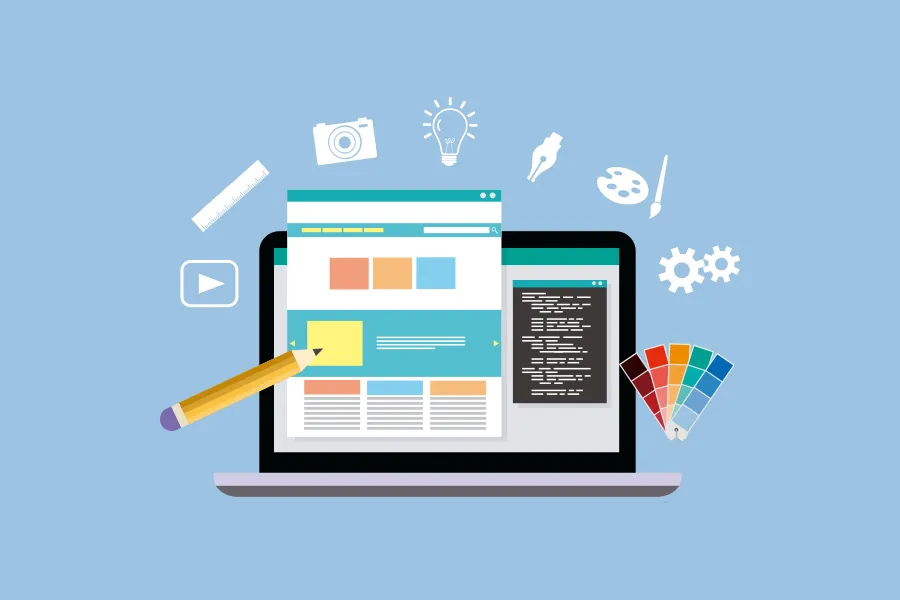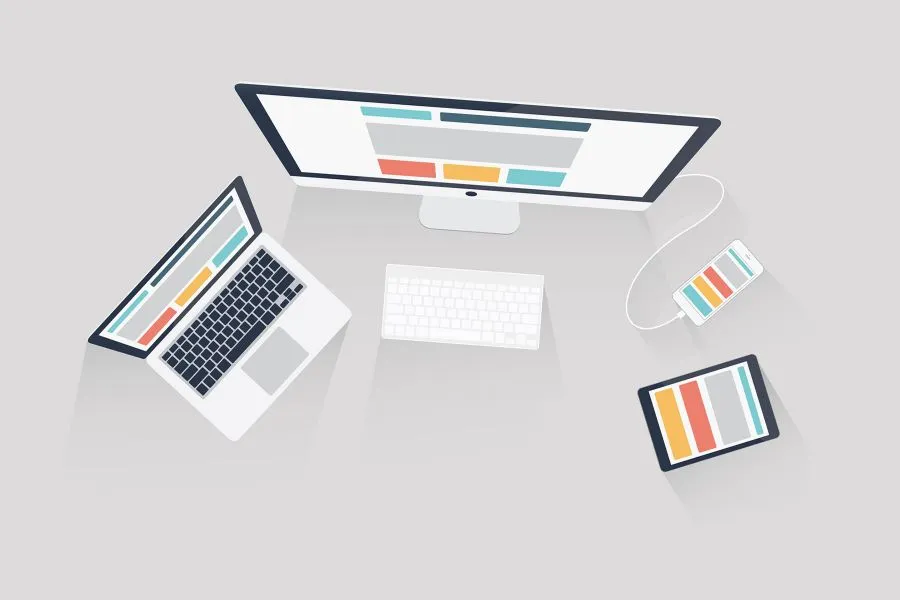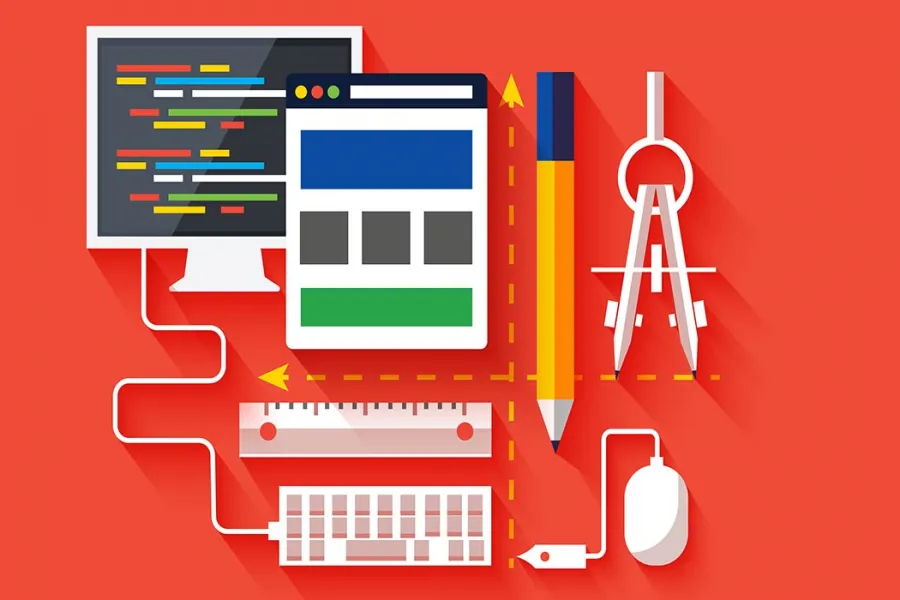Welcome to the world of web design! If you’re new to this field, you may feel overwhelmed by the vast array of tools, technologies, and design principles at your disposal. But don’t worry – we’re here to help. In this comprehensive guide, we’ll take you on a journey from the very beginning, covering the fundamentals of web and providing you with the skills and knowledge you need to create stunning websites that captivate your audience. Whether you’re a complete beginner or just looking to refresh your skills, this guide is designed to take you from scratch to success. So, let’s get started
What Is Web Design?
Web design is the process of creating visually appealing and user-friendly websites that meet the needs of both the client and the target audience. It involves a combination of technical skills, creative vision, and attention to detail to craft a unique online presence. Web design encompasses the planning, conceptualization, and production of digital products, including websites, applications, and mobile interfaces. A good web should be easy to navigate, fast loading, and responsive across various devices and platforms. The goal of web design is to communicate a brand’s message, engage users, and drive business results. Whether it’s a corporate website, e-commerce platform, or blog, effective web can make a significant impact on how users perceive a brand and interact with its online presence. By balancing form and function, web designers can create an exceptional user experience that sets their clients apart in a competitive digital landscape.

Read more: Building Your First Website: A Step-by-Step Tutorial
What Does a Web Designer Do?
A web designer is responsible for creating visually appealing and user-friendly websites that meet the needs of both the client and the target audience. Their primary task is to design and develop a website’s layout, structure, and overall aesthetic, ensuring it is both functional and aesthetically pleasing, The role of a web designer typically involves:
- Understanding the client’s brand identity, goals, and target audience to create a website that effectively communicates their message.
- Designing the website’s visual elements, such as color schemes, typography, and imagery.
- Creating wireframes and prototypes to plan the website’s layout and functionality.
- Developing the website using HTML, CSS, JavaScript, and other programming languages.
- Ensuring the website is responsive, mobile-friendly, and works seamlessly across various devices and browsers.
- Testing and debugging the website to ensure it is error-free and performs well.
A web designer must also stay up-to-date with the latest design trends, technologies, and best practices to deliver high-quality work that meets the client’s expectations.
the Basics of Web Design
The basics of web design are essential for creating a visually appealing and user-friendly website that effectively communicates its message to its audience. When designing a website, it’s crucial to consider the following fundamental elements:
The Fundamentals of Web Design
Web design is the process of creating visually appealing and user-friendly websites that meet the needs of both the client and the target audience. To achieve this, designers must consider several key factors, including:
- The selection of colors used in the website’s design, which can evoke emotions, convey brand identity, and enhance user experience.
- The arrangement of visual elements on the page, such as text, images, and icons, to create a logical flow and easy navigation.
- The use of fonts, font sizes, and line spacing to create a consistent and readable text style.
- The strategic placement of images, graphics, and videos to break up text, add visual interest, and convey messages.

Read more: The Best Elementor Plugins for Stunning Designs
Choosing the Right Web Hosting Platform
When it comes to hosting your website, you have several options to consider. Some popular choices include:
- Hostinger: A reliable and affordable hosting platform that offers a range of plans to suit different needs.
- Ulltahost: A web hosting company that provides fast, secure, and scalable solutions for businesses of all sizes.
Designing Your Website with Elementor
Elementor is a popular page builder plugin that allows you to create custom layouts without coding knowledge. With its user-friendly interface and extensive library of templates and widgets, Elementor makes it easy to design a website that meets your unique needs.
E-commerce Solutions with Shopify
If you’re looking to create an online store or sell products online, Shopify is an excellent choice. This e-commerce platform offers a range of customizable templates, seamless integration with payment gateways, and advanced analytics to help you track performance.
Finding Inspiration with Envato Elements
Envato Elements is a subscription-based service that offers access to a vast library of digital assets, including website templates, graphics, and UI kits. With Envato Elements, you can find inspiration for your web design project and save time by using pre-made elements.
Building a Strong Foundation in HTML and CSS
Building a strong foundation in HTML and CSS is essential for any web developer or designer. HTML (Hypertext Markup Language) is the backbone of a website, providing the structure and content, while CSS (Cascading Style Sheets) is responsible for the visual styling and layout. To build a solid foundation in these technologies, it’s crucial to understand the basics of HTML and CSS, including:
- HTML structure and syntax
- Tag hierarchy and nesting
- Semantic meaning of HTML elements
- CSS selectors, properties, and values
- Box model and layout techniques
By mastering these fundamentals, you’ll be able to create a robust and maintainable website that is both visually appealing and functional. Start by learning the basic HTML tags, such as headings, paragraphs, links, and images, and then move on to more advanced topics like forms, tables, and semantic HTML. In CSS, focus on understanding the box model, positioning, and layout techniques, as well as how to use pre-defined values and units.
practice building small projects, such as a personal portfolio or a simple website for a friend’s business. This will help you apply your knowledge and develop problem-solving skills. With a strong foundation in HTML and CSS, you’ll be well-equipped to tackle more complex web development tasks and build a successful career in this field.

Read more: Elementor website builder for small businesses
Designing for User Experience and Accessibility
Effective web design requires a deep understanding of user experience (UX) and accessibility. UX is the process of creating products that are intuitive, easy to use, and provide a seamless experience for users. Accessibility, on the other hand, is the practice of designing products that can be used by everyone, regardless of their abilities or disabilities. To achieve both, designers must consider several key factors, including:
- A logical and consistent navigation system that helps users find what they need quickly and easily.
- Using simple and concise language in all content to ensure it’s accessible to a wide range of users.
- Designing with high contrast colors and clear typography to make content easily readable for users with visual impairments.
- Ensuring that all interactive elements can be accessed using a keyboard only, making it possible for users who rely on assistive technologies to use the site.
By prioritizing UX and accessibility, designers can create websites that are not only visually appealing but also usable and inclusive for all users. By considering the needs of all users, designers can help bridge the gap between design and functionality, ultimately creating a better online experience for everyone.
In conclusion, this beginner’s guide to web design has provided you with the foundation to start your journey from scratch. By understanding the basics of web principles, tools like Elementor and Shopify, and the importance of hosting platforms like Hostinger and Ultahost, you are well-equipped to create a successful and visually appealing website.

